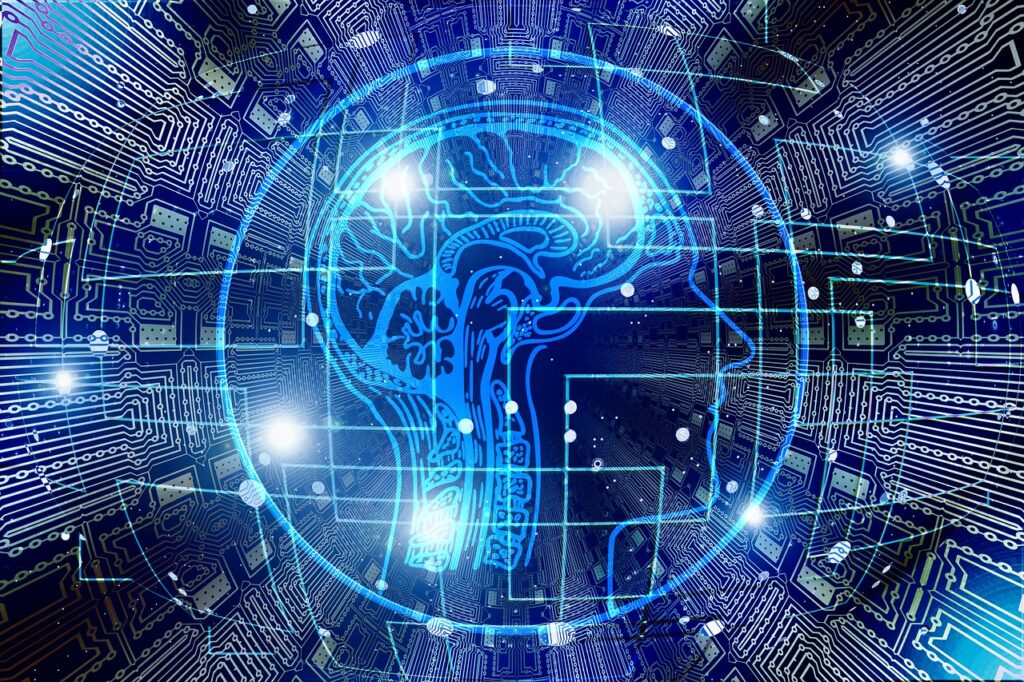In today’s fast-paced technological society, we often hear about how artificial intelligence and machine learning are emerging as powerful techniques for accelerating data analytics amongst a wide variety of business platforms. But what exactly is Machine Learning, and how is it being implemented in platforms? How exactly can we harness the power that Machine Learning brings to create more robust tools to benefit clients?
Machine Learning (ML) is a subset of Artificial Intelligence focused on giving computers the ability to learn data rather than explicitly being programmed. The process that the computer uses to learn the data typically involves two steps: feeding input and output data pairs into an ML model, and testing, or validating, the ML model by providing only input data to determine prediction accuracy.
In the first step of Machine Learning, the ML model is given both input and output data. This process, commonly referred to as training, allows the machine learning model to start recognizing patterns to fit how the input and the output are correlated. As more input and output data points are given during the process of training the dataset, the ML Model becomes more mature, as, through trial and error, it is able to find the best method of prediction.
In the second step of the ML Process, the ML Model generated during training is validated. During this process, multiple input files are fed into the ML Classifier, and the classifier utilizes the patterns that it has learned during the training phase to return an output prediction.
These two steps, taken together, are the underlying framework in machine learning. Whether the application be natural language processing, medical diagnosis, or facial recognition, most Machine Learning-integrated systems have been previously trained on data and are being validated by some user.
Now that we understand the basics of Machine Learning, it is important to learn how Machine Learning is being implemented for data analytics in some of the largest platforms today, ranging from the Amazon Alexa device to Youtube’s search algorithm.
There are several different methods that business platforms use to employ machine learning, but one of the foremost is data analytics. By feeding extensive input and output data from past experiences into an ML model during the training phase, the Machine Learning model starts to recognize patterns in data. Furthermore, when companies such as Amazon evaluate the ML model that has been trained on past data, they are able to predict what future sales will look like.

The potential for data analytics, however, extends far beyond simply predicting future sales. If a company wants to figure out what types of products fit a user’s preferences the best, the company can train an ML model to learn the relationships between past product characteristics and sales data. If a medical company wants to determine what the best genomic structure is for their product, the company can train an ML Model to recognize relationships between different combinations of genes and simulated outputs. If a networking corporation wants to build a chatbot to help customers pick the best professionals in a user’s field, the corporation can train that chatbot using Machine Learning to recognize how to respond to different messages.
However, despite the evident benefits that Machine Learning brings to Data Analytics, the question of how exactly Machine Learning helps create robust tools to benefit clients still remains. It is often difficult to pinpoint what types of tools have been primarily made as a result of machine learning algorithms, and even after pinpointing a tool, discerning why a tool depends on machine learning as opposed to other programming algorithms is quite challenging.
Typically, when corporations provide platforms that involve a great deal of data, commonly referred to as “Big Data”, using programming structures such as decision trees is futile as a consequence of large amounts of computation and little overall benefit in recognizing complicated patterns. As a result, data analysts will commonly refer to neural networks, a powerful machine learning algorithm that is modeled after the human brain and nervous system. The main advantage that neural networks pose is that they can capture more complicated relationships between input and output data by using several hidden layers of computational neurons. This added benefit allows for more accurate data analysis and faster results, which is often crucial in the context of thousands of pieces of data. Furthermore, by applying ML to data analytics, the data is able to be processed significantly more efficiently, thus resulting in a more robust ML Model that can be utilized in a variety of contexts.
This Summer, as an Internet Architecture/Machine Learning Apprentice at Anant Corporation, I am working on developing several parts of the Leaves platform, namely the Leaves API and the Leaves Lite Machine Learning platform. Since the Leaves Lite Web Application, a light-weight link/bookmark viewer for the Appleseed Search Platform, involves data processing for thousands of links, it is imperative to efficiently produce ML models that classify patterns in the types of links a user selects and recommends to others. To that end, I am working on a Convolutional Neural Network implementation to enhance the Leaves Lite platform and employing machine learning to empower Anant’s Data Analytics.
To conclude, Machine Learning is a growing industry with a plethora of applications in all industries. From Amazon to Google to Facebook, the world’s leading companies are utilizing Machine Learning Algorithms and Data Analytics to boost their platforms. You can too. What are your opinions on how Machine Learning is being used in business nowadays? Do you have questions about how such technology could be used to help your business platform grow? Don’t hesitate to drop us a line!



